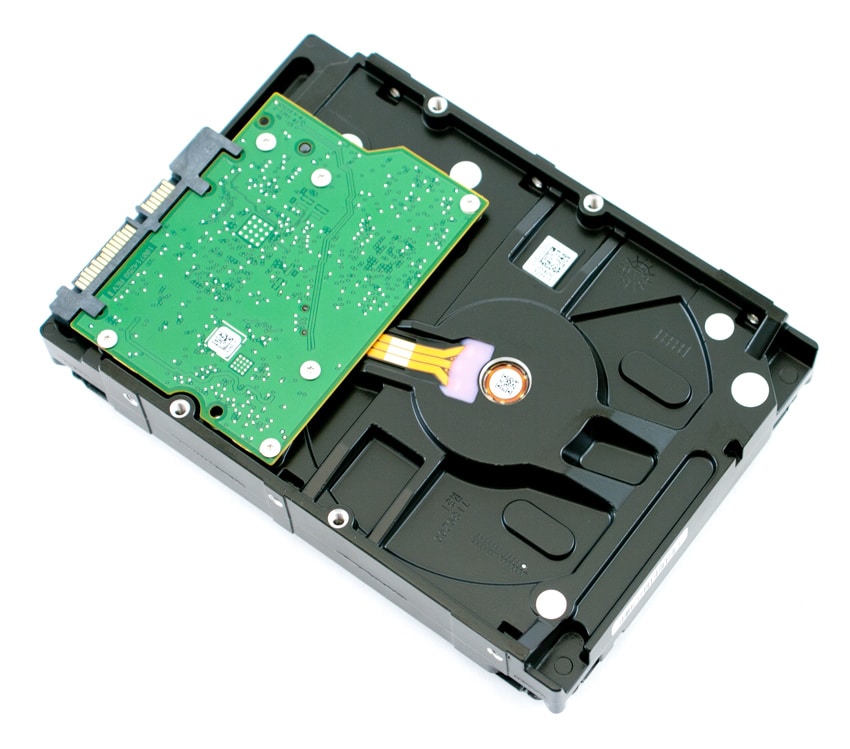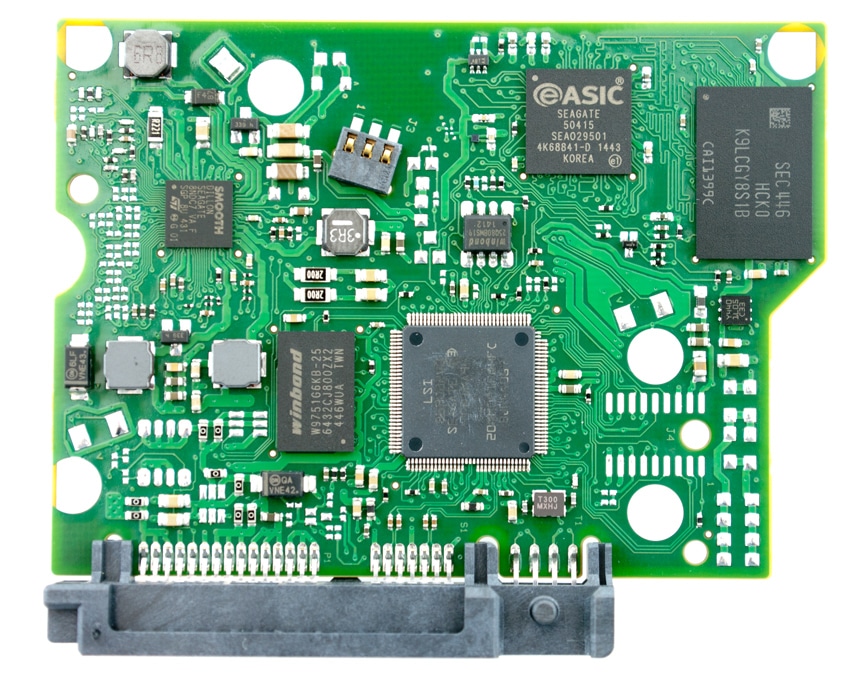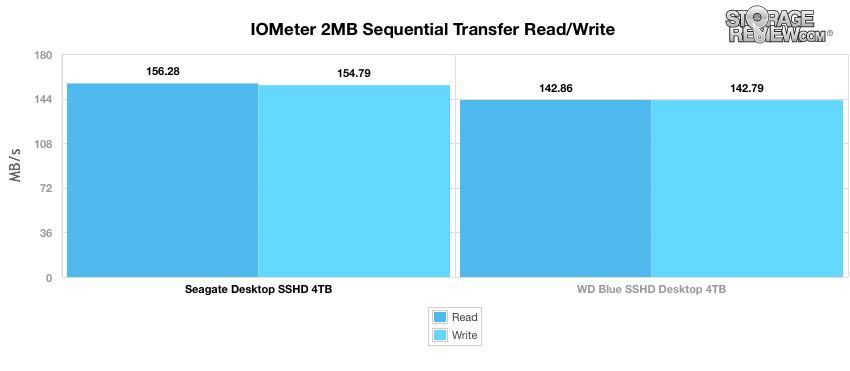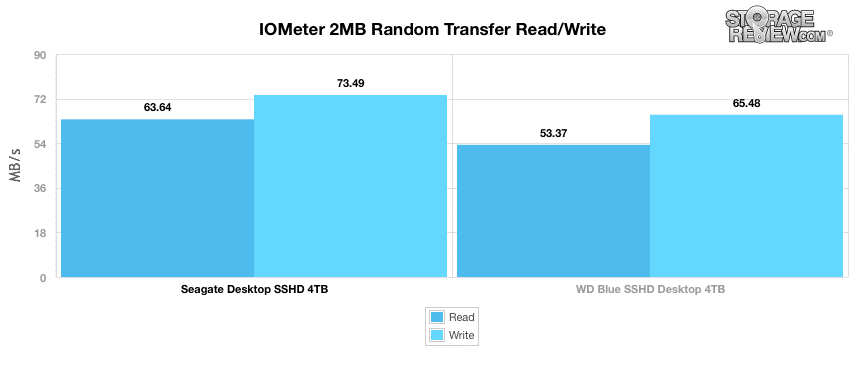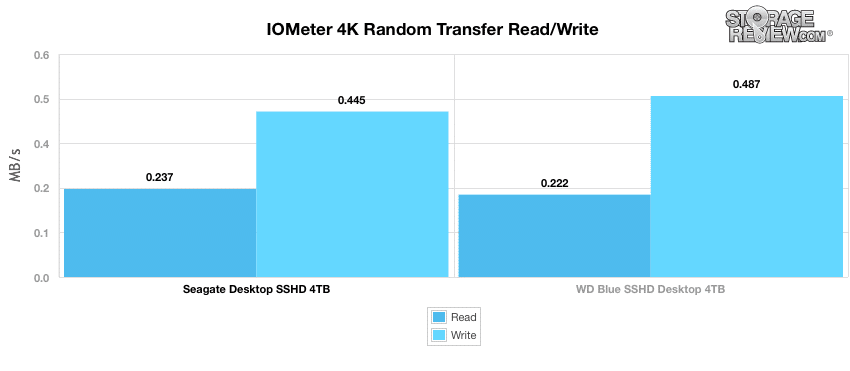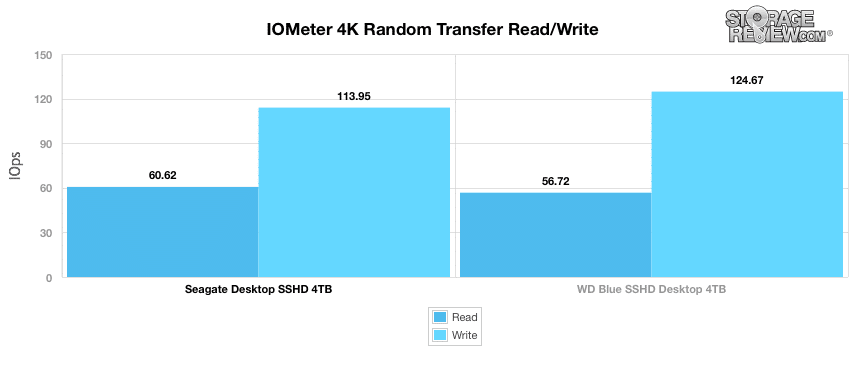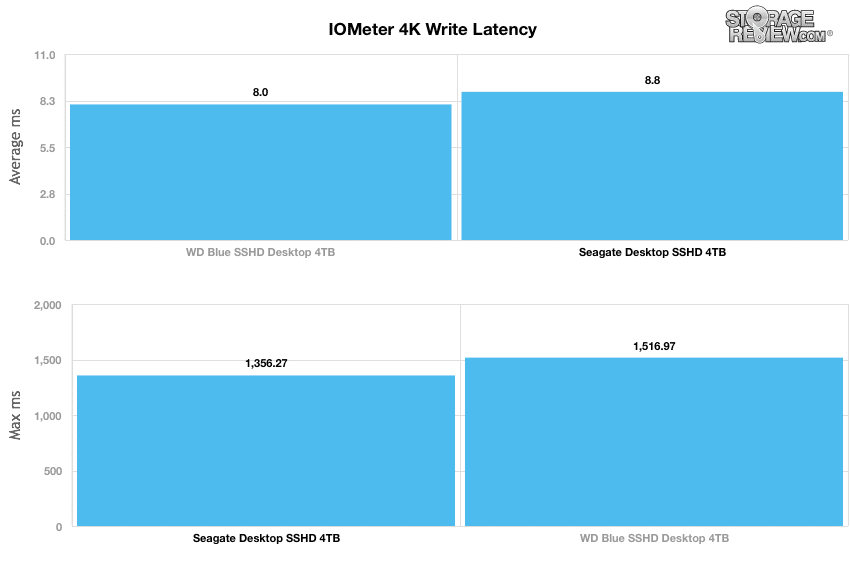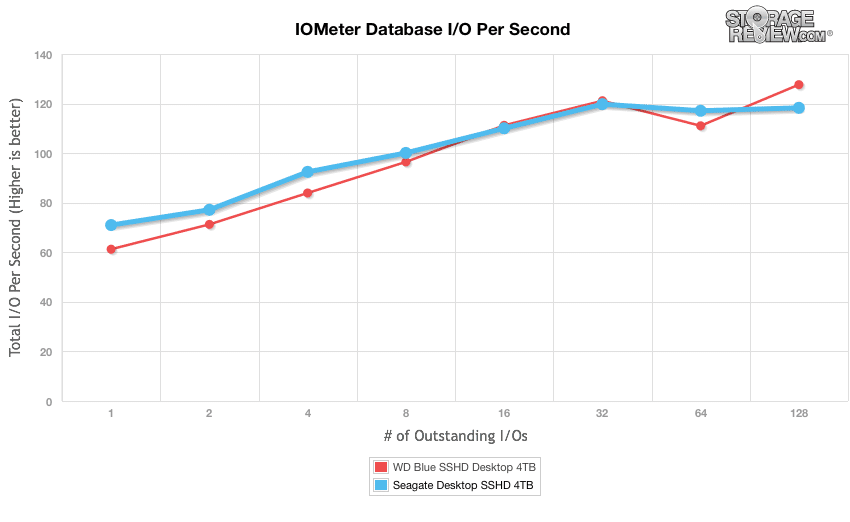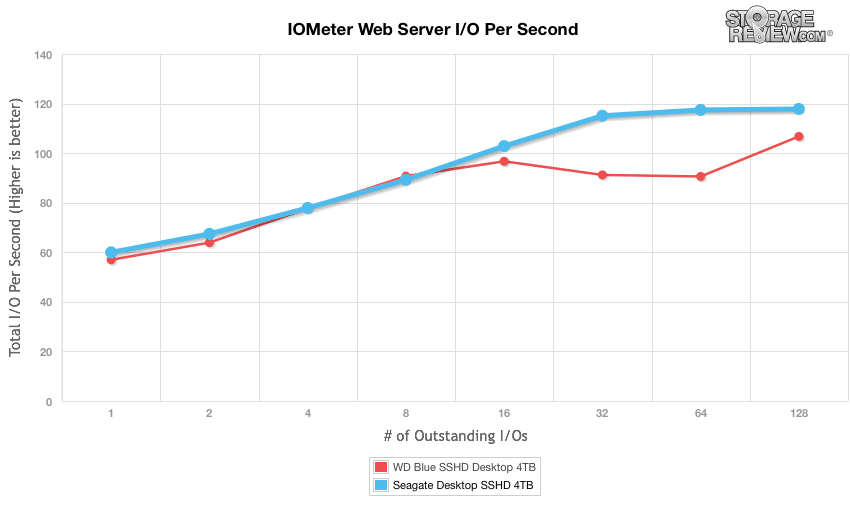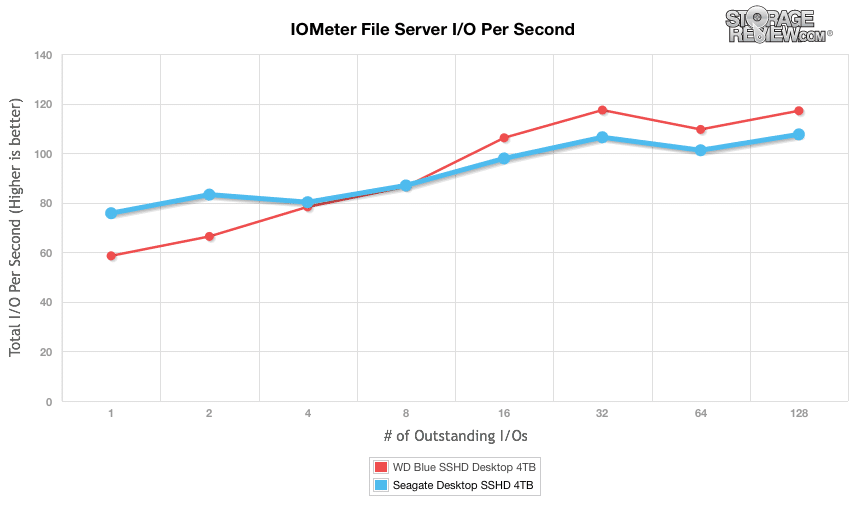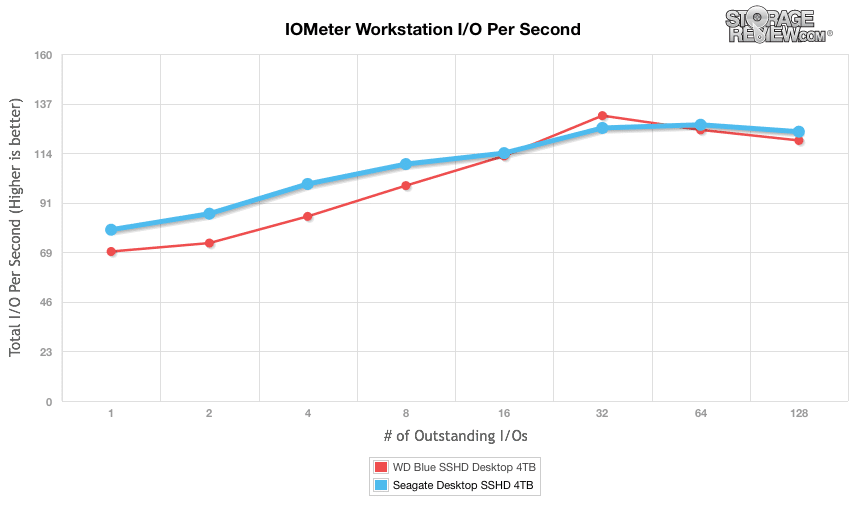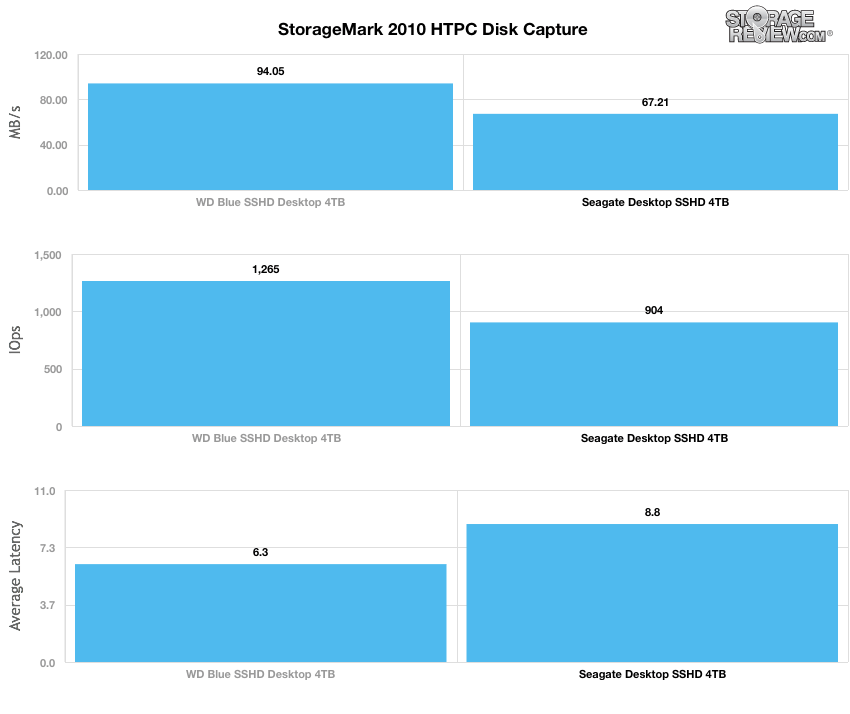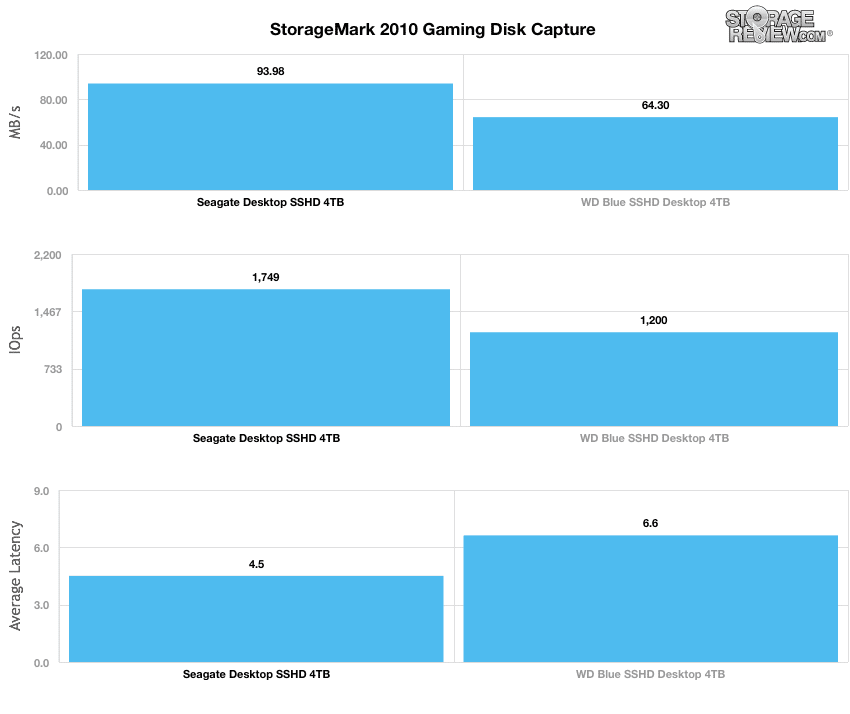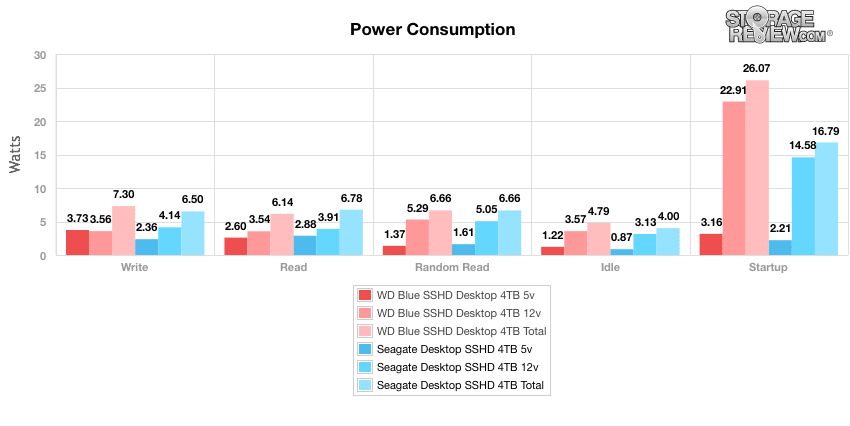
Designed for desktop PCs, workstations, and high-performance DAS devices, the Seagate Desktop SSHD is the company’s latest foray into the hybrid solid-state drive market. Its SSD-like qualities, coupled with the capacity benefits of hard disk drives, allows the Seagate Desktop SSHD to offer consumers unique features and capabilities over traditional HDDs, including the ability to achieve faster transfer speeds as well as quicker system boot ups. Though proper solid-state drives are continuing to lower their prices and increase in maximum capacity, hybrid drives still have a role to play in the storage market due to their cost effectiveness. The Seagate Desktop is certainly no exception in this regard.
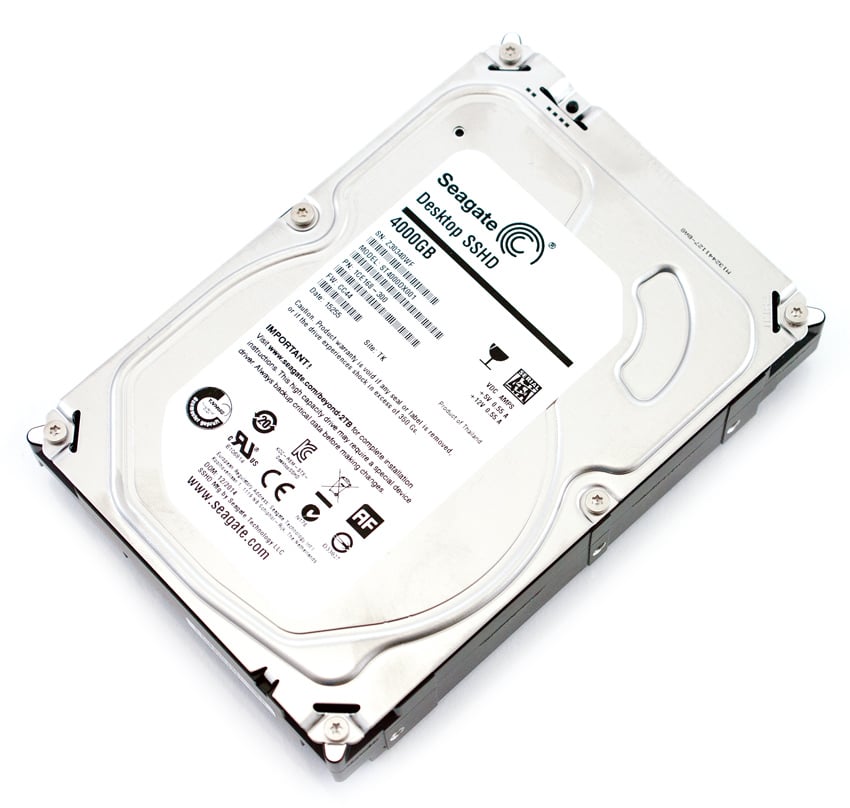
As far as its hardware goes, the Seagate hybrid drive is comprised of a 3.5-inch form factor and is equipped with SATA 6Gb/s Native Command Queuing technology (NCQ), allowing hard disk drives to internally optimize how received read and write commands are executed. Additionally, Seagate quotes an average read data rate of 146MB/s with a max sustained data rate of 180MB/s, which are noticeably better numbers than traditional hard disk drives.
The Seagate Desktop SSHD comes in capacities of 1TB, 2TB, and 4TB, priced at roughly $75, $95 and $150, respectively; all drives are backed by a limited 3-year warranty. We will be looking at the 4TB unit for this review.
Seagate Desktop SSHD 4TB Specifications
- Model Number: ST4000DX001
- Capacities: 1TB, 2TB, and 4TB
- Interface: SATA 6Gb/s NCQ
- NAND Type/Size: MLC/8GB
- DRAM Cache (MB): 64
- SATA Transfer Rates Supported (Gb/s): 6.0/3.0/1.5
- Seek Average, Read (ms): <12
- Seek Average, Write (ms): <12
- Average Data Rate, Read, Avg All Zones (MB/s): 146
- Average Data Rate From NAND Media (MB/s): 190
- Max Sustained Data Rate, OD Read (MB/s): 180
- Heads/Disks: 8/4
- Bytes per Sector: 4096
- Reliability/Data Integrity
- Load/Unload Cycles: 300,000
- Nonrecoverable Read Errors per Bits Read, Max: per 10E14
- Predicted Annualized Failure Rate (AFR): <1%
- Power (W)
- Operating, Typical: 7.5
- Idle, Typical: 6.2
- Standby Mode: 0.75
- Sleep Mode: 0.75
- Environmental
- Temperature (°C)
- Operating: 0 to 60
- Non-operating: −40 to 70
- Temperature (°C)
- Physical
- Height (in/mm): 1.028/26.11
- Width (in/mm): 4.0/101.6
- Depth (in/mm): 5.787/146.99
- Weight (lb/g): 1.345/610
- Warranty: 3-year limited
Design and build
Like all SSHDs, the Seagate Desktop hybrid drive looks virtually identical to a traditional HDD; the only difference being inside, which is equipped with 8GB of MLC NAND. All models, including the 4TB capacity, are of the 3.5″ form-factor, limiting its applications to Desktop computers.
The design of the Seagate Desktop SSHD is consistent with other drives released by the company, displaying a white drive information label. The front of the drive shows the standard SATA and power connectors, while the sides are equipped with the usual screw holes for easy mounting. When turning the drive over, you will see the Seagate drive’s circuit board.
Removing the PCB board shows the LSI controller with its 8GB of NAND.
Consumer Synthetic Benchmarks
All consumer SSD benchmarks are conducted with the StorageReview HP Z620 Workstation. We compared Seagate Desktop SSHD with the following comparable:
All IOMeter figures are represented as binary figures for MB/s speeds.
In our first test, which measures 2MB sequential performance, the Seagate drive recorded slightly better results with 156.28MB/s read and 154.28MB/s write, while the WD Blue SSHD 4TB posted 142.86MB/s read and 142.786477 write.
Our next test looks at 2MB random transfer performance. In this scenario, we measured the Seagate with 63.64MB/s read and 73.49MB/s write while the WD Blue SSHD 4TB trailed again, posting reads and writes of 53.37MB/s and 64.48MB/s, respectively.
Switching to smaller 4K random transfers showed better parity between the two lines of SSHD drives. In this benchmark, the Seagate 4TB recorded 0.237MB/s in read activity and 0.445MB/s for writes while the WD Blue SSHD 4TB measured 0.222MB/s in read activity and a leading 0.487MB/s in write activity.
When looking at IOPS, the Seagate SSHD 4TB edged out the WD Blue in reads once again, scoring 60.62 IOPS; however, it recorded slower writes (113.95 IOPS) compared to the WD Blue 4TB model, which posted 124.67 IOPS.
Moving to our 4K write latency benchmark, which looks at both the average and maximum readings, the Seagate recorded slightly better max latency results with 1,356ms (maximum). The WD Blue SSHD 4TB showed an average latency of 8.02ms with maximum latency at 1,516.97ms.
Our last series of synthetic benchmarks compare the hard drives in a series of server mixed-workloads with a queue depth of ranging from 1 to 128. Each of our server profile tests has a strong preference towards read activity, ranging from 67% read with our database profile to 100% read in our web server profile.
The first is our database profile; with a 67% read and 33% write workload mix primarily centered on 8K transfer sizes. In this scenario, though the Seagate recorded the superior burst speed, it ended up with only 118.28 IOPS in the terminal. The WD Blue 4TB posted an initial IOPS of 61.25 IOPS while the terminal queue depths measured 127.63 IOPS.
Our web server profile is read-only with a spread of transfer sizes from 512-byte to 512KB. Here, the Seagate recorded a range of 59.97 IOPS to 117.83 IOPS, while the WD Blue 4TB drive measured 56.97 IOPS to 106.74 IOPS.
The next profile looks at a file server, with 80% read and 20% write workload spread out over multiple transfer sizes ranging from 512-byte to 64KB. In this scenario, the Seagate 4TB SSHD ranged from 75.78 IOPS to 107.57 IOPS, whereas the WD Blue 4TB delivered a range of 58.57 IOPS to 117.10 IOPS.
Our last profile looks at workstation activity, which is comprised of a 20% write and 80% read mixture using 8K transfers. In this benchmark, the Seagate drive posted slightly better results than the WD, with a range of 78.97 IOPS to 124.17 IOPS. The WD Blue 4TB SSHD drive started at the 68.93 IOPS mark but ended up with 120.15 IOPS at QD128.
Consumer Real-World Benchmarks
For the average consumer, trying to translate random 4K write speeds into an everyday situation is pretty difficult. It helps when comparing drives in every setting possible, but it doesn’t exactly work out into faster everyday usage or better game loading times. For this reason we turned to our StorageMark 2010 traces, which include HTPC and Gaming traces to help readers find out how a drive might rank under these conditions.
The first real-life test is our HTPC scenario. In this test we include: playing one 720P HD movie in Media Player Classic, one 480P SD movie playing in VLC, three movies downloading simultaneously through iTunes, and one 1080i HDTV stream being recorded through Windows Media Center over a 15 minute period. Higher IOPS and MB/s rates with lower latency times are preferred. In this trace we recorded 2,986MB being written to the drive and 1,924MB being read.
In our HTPC profile, the Seagate SSHD posted noticeably slower results than the WD Blue with just 67.21MB/s, 904 IOPS and 8.8ms in average latency. The WD Blue SSHD 4TB boasted 94.05MB/s and 1,265 IOPS while average latency was measured at 6.3ms.
Our second real-life test covers disk activity in a gaming environment. Unlike the HTPC or Productivity trace, this one relies heavily on the read performance of a drive. To give a simple breakdown of read/write percentages, the HTPC test is 64% write, 36% read, the Productivity test is 59% write and 41% read, while the gaming trace is 6% write and 94% read. The test consists of a Windows 7 Ultimate 64-bit system pre-configured with Steam, with Grand Theft Auto 4, Left 4 Dead 2, and Mass Effect 2 already downloaded and installed. The trace captures the heavy read activity of each game loading from the start, as well as textures as the game progresses. In this trace we recorded 426MB being written to the drive and 7,235MB being read.
Our read-intensive Gaming trace told a different story with the Seagate drives showing much better results this time around. Here, the Seagate SSHD posted 93.98MB/s, 1,749 IOPS, and an average latency of 4.5ms while the WD Blue drive recorded 64.30MB/s, 1,200 IOPS, and 6.6ms, while the WD Blue produced .
Power Consumption
In our power efficiency tests, we measured the WD and Seagate SSHDs using both 5 and 12 voltages (spin-ups). In this benchmark, the Seagate posted idle readings of 0.87W (5v) and 3.13 (12v) for a total of 4.00W while idle consumption from the WD Blue SSHD measured 1.22W (5v) and 3.57W (12v) for a total of 4.79W. The highest consumption from the Seagate drive had 14.58W (12v). WD Blue SSHD 4TB highest recording was also during the startup, which measured a much higher 22.91W (12v) using the same voltage.
Conclusion
The Seagate Desktop SSHD is a 3.5 inch hybrid drive that combines HDD capacity with SSD performance. Designed for desktop PCs, workstations, and high-performance DAS devices, the Seagate drive is equipped with 8GB of NAND flash, allowing hot data to be kept on flash storage while less active data stored on the HDD. As result, consumers will experience speedy system boots, faster load times, and increased responsiveness compared to traditional HDD. Though this is nothing unique for an SSHD, the Seagate Desktop SSHD is fairly cheaper than its WD Blue comparable, going for roughly $50 dollars less ($150 vs. $200 for the 4TB capacity).
Diving into its performance, the two hybrid drives we compared posted results very similar to each other, though the Seagate offered better overall transfer speeds during mix workloads. In our 2MB sequential transfer benchmark, the Seagate Desktop SSHD measured 156.28MB/s read and 154.28MB/s write while random speeds of the same file size reached 63.64MB/s read and 73.49MB/s write. In our consumer real-world benchmarks, however, the Seagate drive was handily beaten by the WD Blue in the HTPC scenario. Here, the Seagate SSHD posted just 67.21MB/s, 904 IOPS and 8.8ms in average latency for the latter compared to the WD Blue’s 94.05MB/s, 1,265 IOPS, and 6.3ms. Gamers should certainly take note of our gaming profile benchmark, as results showed a massive increase to 93.98MB/s, 1,749 IOPS, and an average latency of 4.5ms compared to the WD Blues’s recorded 64.30MB/s, 1,200 IOPS, and 6.6ms.
Pros
- Better performance than traditional HDDs
- Hot files stored in 8GB NAND flash
- Good performance during mix workloads
Cons
- Performed well under the WD Blue during HTPC real-world benchmarks
Bottom Line
The Seagate Desktop SSHD is a good performing hybrid drive that offers consumers 8GB of NAND flash for increased overall system performance as well as a high capacity point.

